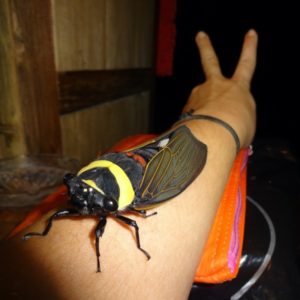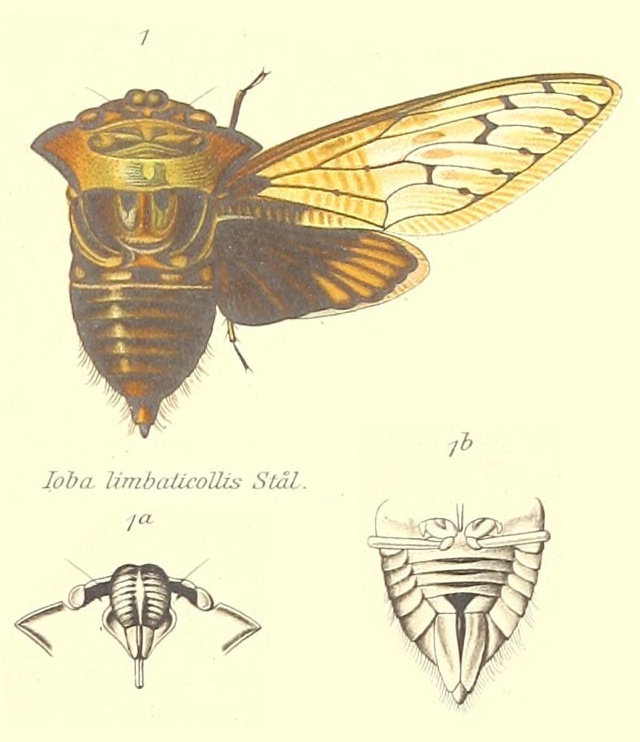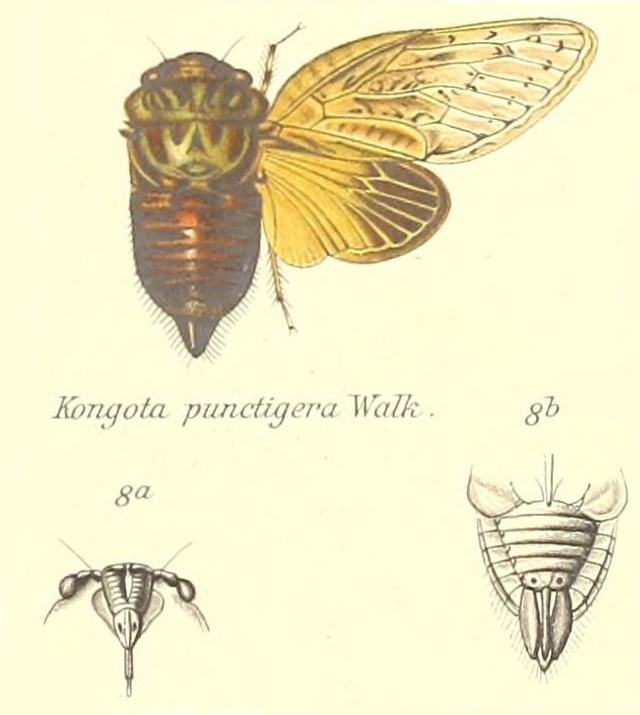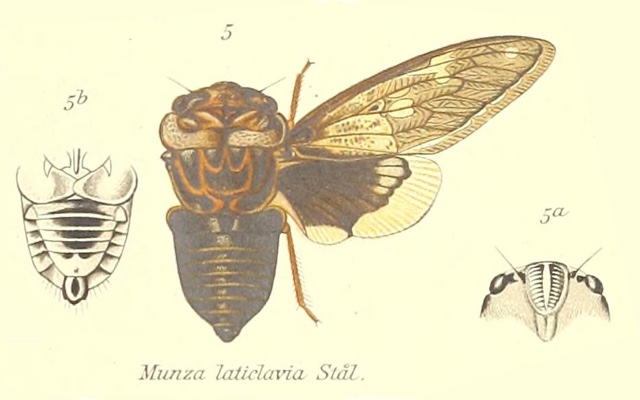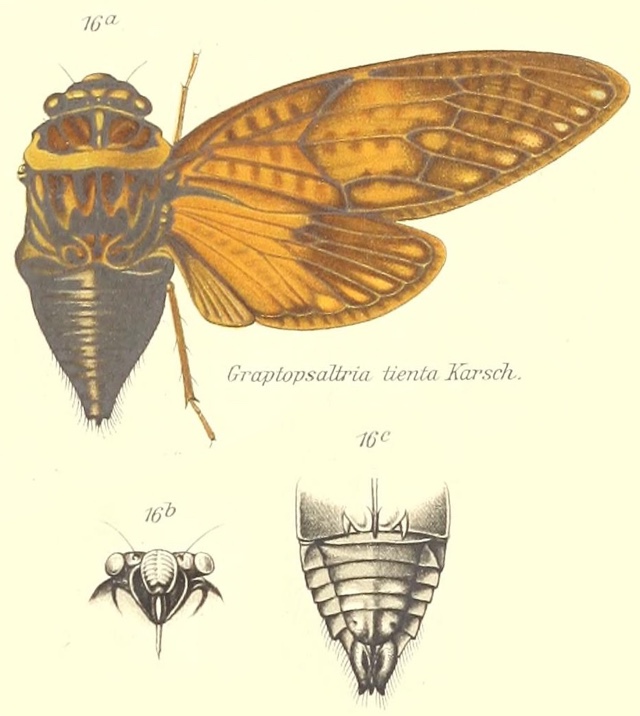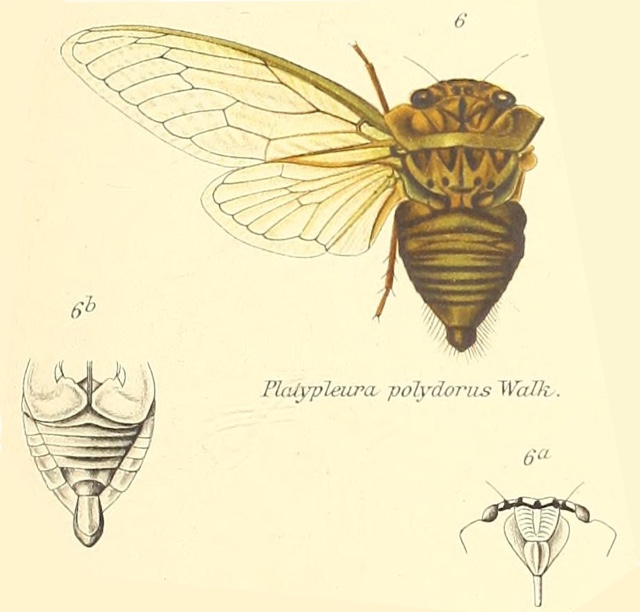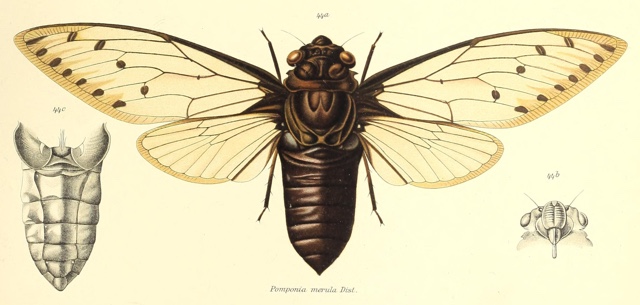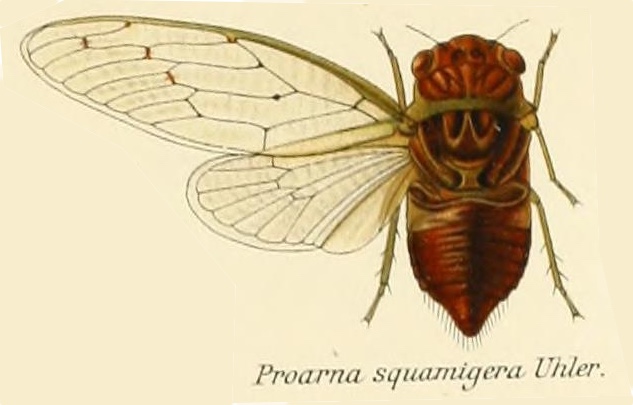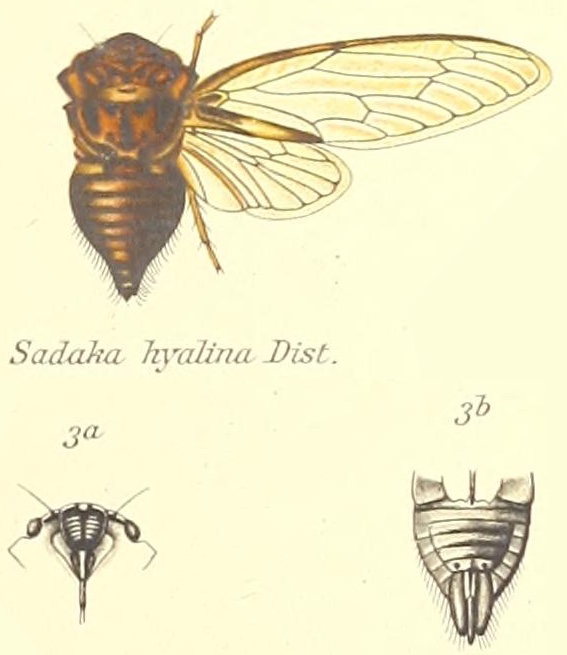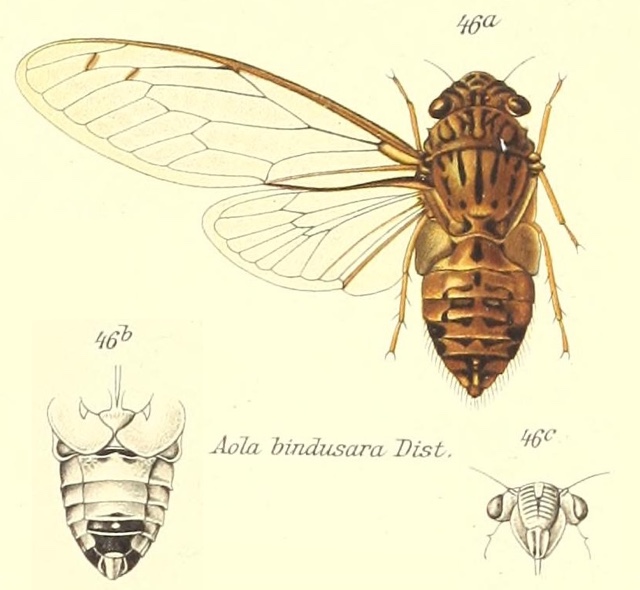The Tacua speciosa is a beautiful cicada native to the countries Malaysia & Indonesia, and the islands Borneo & Sumatra, and likely other islands and nations of the area. Tacua speciosa are well known for their large size, opaque wings, black body, striking yellow/chartreuse pronotal collar, red cruciform elevation, and cyan or yellow tergites. There are two subspecies.
The name speciosa comes from the Latin word “specios” which means beautiful or showy.

Image credit: Alexey Yakovlev, Tacua speciosa (Cicadidae). Borneo. Trusmadi area. 2100 m, licensed under the Creative Commons Attribution-Share Alike 3.0 Unported license.
Check out this gallery of Tacua speciosa cicadas, which includes great images like this one:
Scientific classification:
Family: Cicadidae
Subfamily: Cicadinae
Tribe: Tacuini
Genus: Tacua
Species: Tacua speciosa
Subspecies: Tacua speciosa decolorata Boulard, 1994
Subspecies: Tacua speciosa speciosa (Illiger, 1800)
Recently updated Tribe information comes from: MARSHALL, DAVID C. et al.A molecular phylogeny of the cicadas (Hemiptera: Cicadidae) with a review of tribe and subfamily classification.Zootaxa, [S.l.], v. 4424, n. 1, p. 1—64, may 2018. ISSN 1175-5334. Available at: https://www.biotaxa.org/Zootaxa/article/view/zootaxa.4424.1.1
Here is W.L. Distant’s description of this insect from A monograph of oriental Cicadidae:
Body above black ; eyes, anterior pronotal margin (narrowly), posterior margin of pronotum, posterior margin of the third, and the whole of the fourth, fifth and sixth abdominal segments, ochraceous ; basal cruciform elevation red, with its anterior angles black ; body beneath black ; lateral areas and margins to prosternum, a spot at lateral margins of third abdominal segment, and the lateral margins of the fourth, fifth and sixth abdominal segments, ochraceous. Tegmina black, coastal membrane and venation dull reddish, outer margin narrowly creamy-white wings black, the outer margin (excluding anal area) creamy-white. Var. a. Tegmina and wings greyish-brown, the black coloration only observable at margins of the veins. Long.excl.tegm. 47 to 57 millim. Exp.tegm.150 to 180 millim.
Two Distinct Types:
This image comes from A Monograph of Oriental Cicadas by W. L. Distant. 1889-1892.
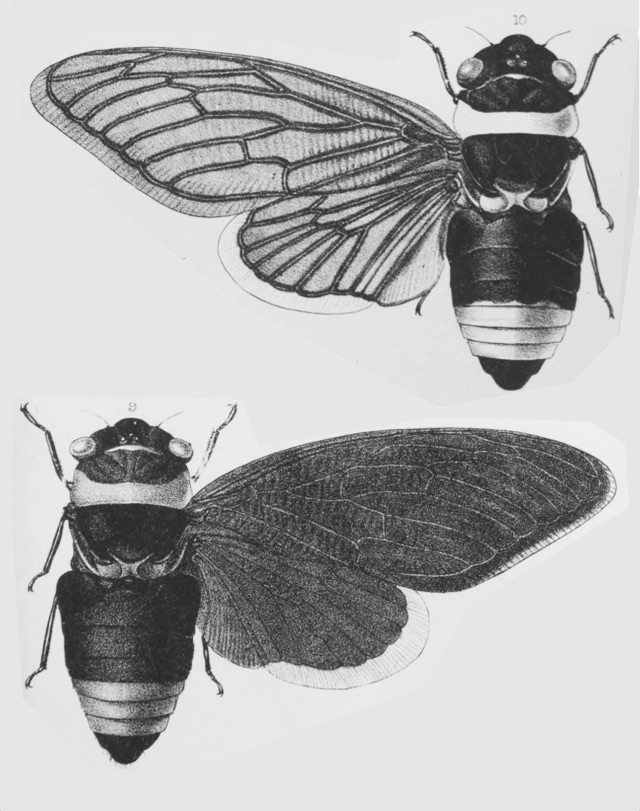
Which is which in the photos and illustrations on this page? Can you tell?
Normal form (#9 in the image): “Tegmina [forewings] black, coastal membrane and venation dull reddish, outer margin narrowly creamy-white wings black, the outer margin (excluding anal area) creamy-white.”
Variety A (#10 in the image) “Tegmina and wings are greying-brown, the black coloration only observable around the veins.”
Size:
T. speciosa is one of the largest cicadas. According to the Distant’s description above — tegm.[forewings] 150 to 180 millim. That’s 5.9 to 7.1 inches. According to my own collection (I have 2). The male is 160mm (6.3″), and the female is 142mm (5.7″). Both are smaller than the Megapomponia and largest Tosena in my collection. T. speciosa cicadas are big, but not the biggest.
Song:
A video of a singing T. speciosa:
The only document specifically about the T. speciosa I’ve found is Boulard, M. 1994c. Tacua speciosa, variete decolorata n. var. (Homoptera, Cicadidae). Revue Française d’Entomologie. 16: 66. — however, that document usually costs around $60, which I’m not ready to invest in (I’ll spend the money on cicadas).
When and Where
The iNaturalist page for Tacua speciosa shows sightings on the islands of Sumatra and Borneo, and the Malay Peninsula.
Peak times are March-April.
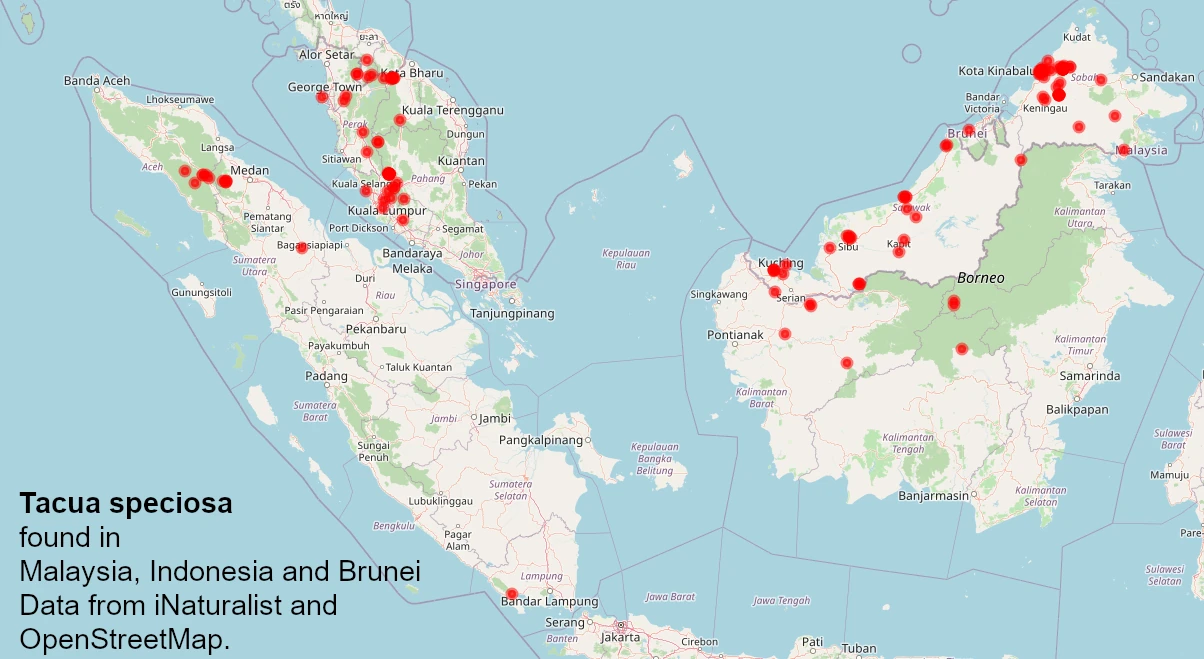
Illustrations
At one point in time, the Tacua speciosa was one of the most illustrated cicadas:
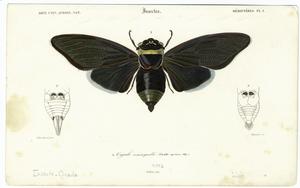
Original Source: From Dictionnaire universel d’histoire naturelle. (Paris: Renard, 1841-1849) Orbigny, Charles d’, Author.
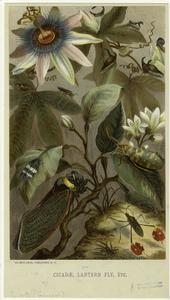
Original Source: From Animate creation : a popular edition of “Our living world” : a natural history. (New York: Selmar Hess, 1885) Wood, J. G. (John George) (1827-1889), Author.
An Illustration of Tacua speciosa from Genera Insectorum, 1913:
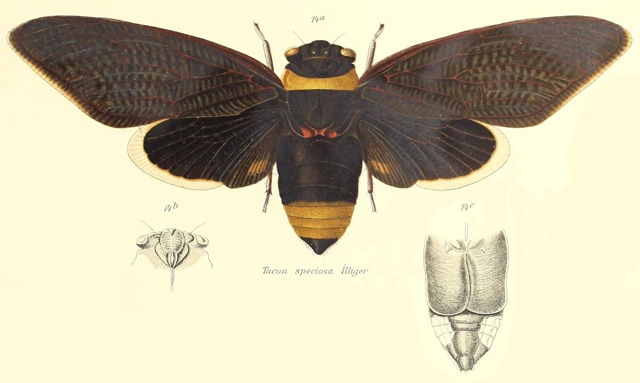
An illustration of Tacua speciosa from An epitome of the natural history of the insects of India : and the islands in the Indian seas by Edward Donovan:
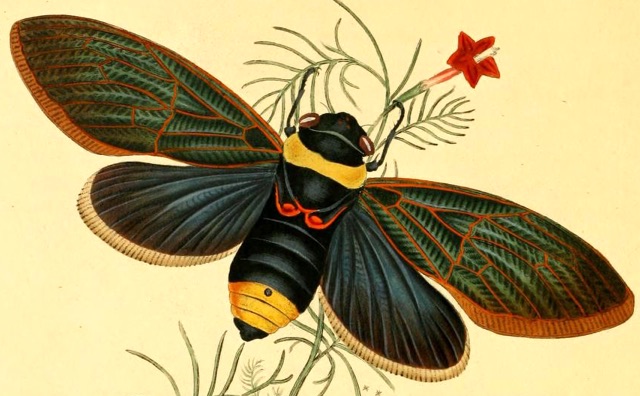 . Note that one of its older names was Cicada indica!
. Note that one of its older names was Cicada indica!
Pop Culture
Pop culture note: this species of cicada was featured on the Wednesday, January 16, 2013 episode of the Daily Show. It is not, however, a 17-year cicada. 🙂 T. speciosa probably has a 2-7 year lifecycle and is not a periodical cicada, but it might be proto-periodical (but most likely is an annual species).
